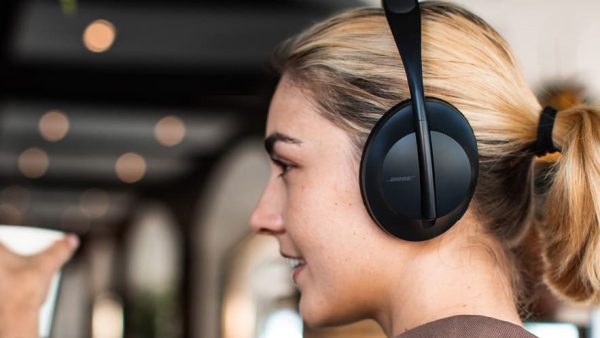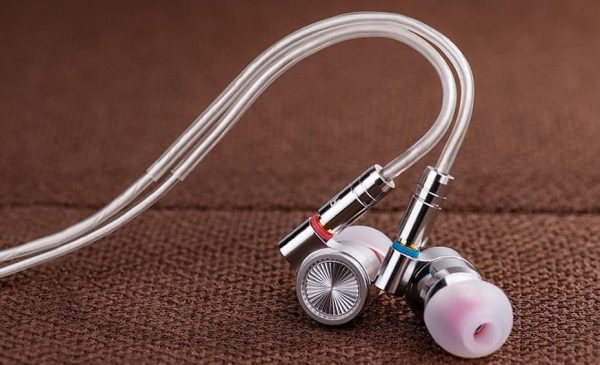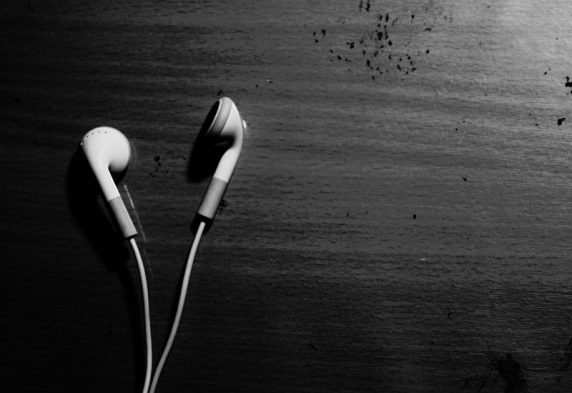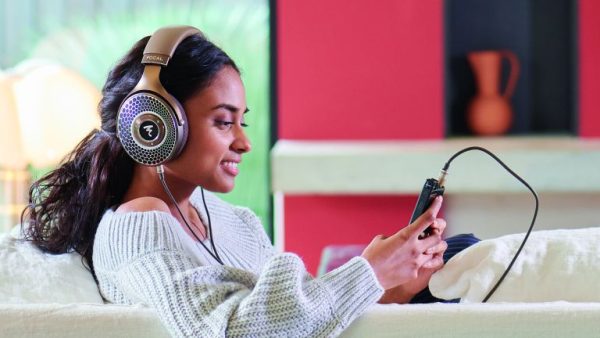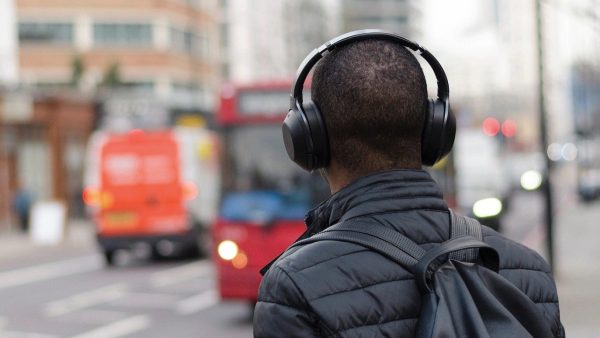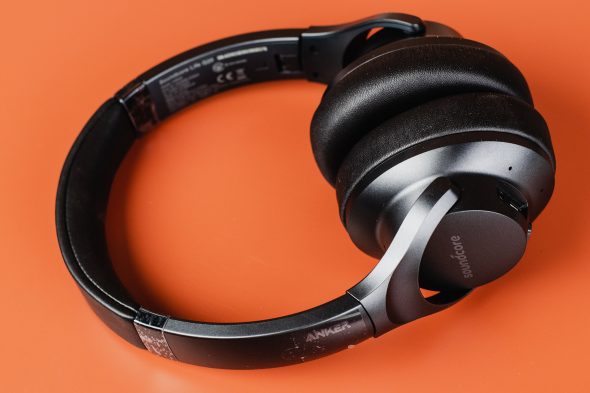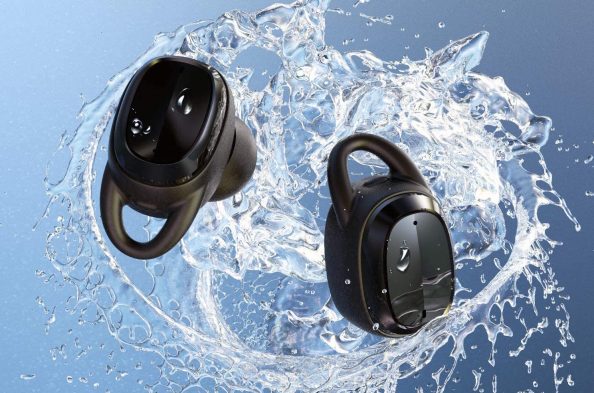Headphones are essentially loudspeakers that are worn on your head. This is why they are called headphones, as you may have guessed. Multiple individual speakers (one for each ear) are linked by material or a bridge that passes over your head.
The audio industry has evolved into a vast sector filled with diverse brands, from the most opulent to the most modest yet high-quality. The whole headphone industry is a mystery for folks like us. This is why we must understand the many sorts of headphones — or at least the ones you’ll require. All of these are unique in terms of fit and design, as well as performance.
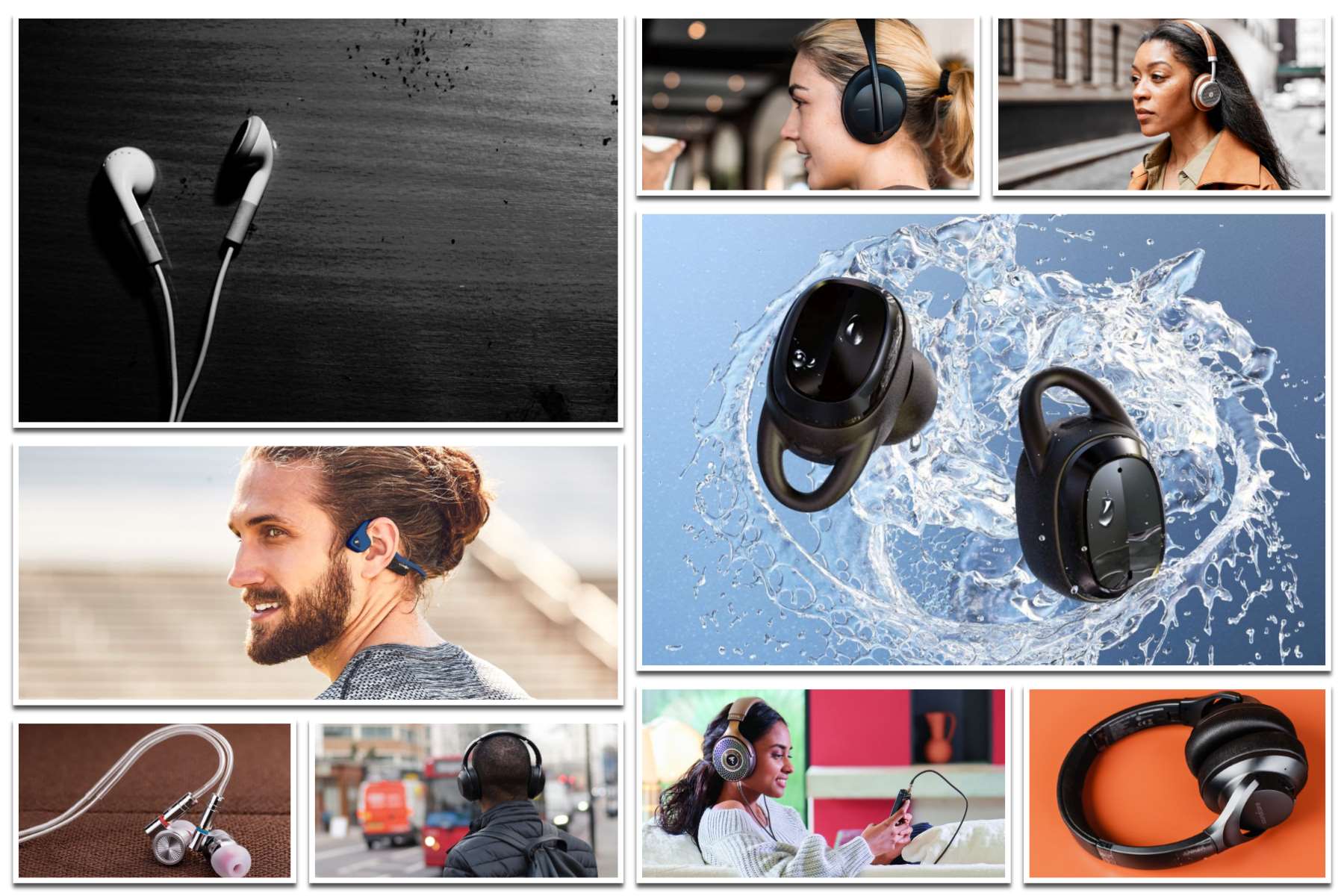
In each category, though, you may discover high-end, high-quality products. They don’t differ significantly in terms of loudness, response frequency, impedance, and bass response.
Different Types of Headphones
There are three main types of headphones: in-ear, on-ear, and over-ear. Know about nine headphones variety of styles, with different functionality and features. Here is the complete list of all types of headphones that you should know.
1. Over-Ear Headphones
They’re the biggest and most likely the first thing to mind when you think about headphones. Because the earcups are large enough to cover your entire ear, they are referred to as over-ear headphones. As a result, they’re also known as around-the-ear headphones (or circumaural).
Advantages Of Over-Ear Headphones
- Extremely comfy fit (the big, plush earpads offer a lot of comforts)
- It has a great sound (they come in all versions and types)
- If necessary, good passive noise isolation that improves the listening experience
Disadvantages Of Over-Ear Headphones
- Due to its large size, it is usually the least portable.
- They have an unstable fit since they are heavier (not for working out)
Not all over-the-ear headphones are created equal, and that you may still get sports and portable over-ear headphones with a folding design. Nonetheless, the broad guidelines described above apply to the vast majority of cases. So, if you’re in the market for a new set of headphones, keep them in mind.
What Are The Over-Ear Headphones Best For:
When it comes to comfort and sound quality, they’re the greatest. This is appropriate for studio usage as well as relaxed home listening. It’s when you don’t have to worry about portability, perspiration resistance, or disturbing others with sound leakage (especially true for open-back headphones).
The majority of professional studio headphones and the top gaming headsets feature an over-ear style. This design has best-in-class comfort for extended periods and excellent audio quality (if you pay for it). When searching for a pair of headphones for everyday usage, this is the design to go for.
2. On-Ear Headphones
When it comes to portable headphones, they are the go-to choice (also called supra-aural headphones). People may be seen wearing them on the streets, throughout their journeys, and even in hot, sweaty gyms. They are simpler to carry due to their reduced size (ear cups) and weight. You may also obtain a stylish status symbol item that looks and sounds amazing if you choose the appropriate model.
Advantages Of The On-Ear Headphones
- Among the “real” headphones, it has the finest portability (not considering buds, just compared to over-ears)
- It has a fantastic sound (with the right model)
- More stable than over-ear headphones and better suited for sports and running.
Disadvantages Of The On-Ear Headphones
- The strain on the earlobes makes it uncomfortable.
- You tend to let more sound in and out (others can hear your music)
These are the broad guidelines that apply in the majority of instances, but not all. Before you buy a set of headphones, make sure you thoroughly study or test the type you’re considering so you know precisely what you’re receiving.
What Are The On-Ear Headphones Best For:
They excel at usage that needs mobility and a secure fit appropriate for activity since they are smaller than their larger siblings (over-ear). They’re frequently found with traveling DJs that have to go from party to party. It wouldn’t make sense for them to wear large over-ears.
They’re also common at the gym and on the runner’s ears. They’re better for sports and don’t irritate your ear canal. Therefore they’re popular among exercise buffs. They’re also popular among hipsters who wear vintage-style on-ears because, well, they’re stylish and simple to carry around.
3. In-Ear Headphones (Also Known As Earbuds Or In-Ear Monitors)
Earbuds or buds are the smallest headphones available. Technically, that isn’t their true name. In-ear headphones are sometimes known as in-ear monitors. We call them earbuds since that’s what most people name them (it makes it simpler for people to locate what they’re searching for). Because part of the headphones goes inside your ears, they’re called in-ear headphones.
A tube is usually inserted into your ear canal to get the audio source near your eardrums as feasible. It improves sound quality and noise isolation. They are available in both wired and wireless configurations. True wireless earphones are particularly trendy these days.
Advantages Of In-Ear Headphones (Earbuds)
- Excellent passive noise isolation provides a high level of privacy and improved audio quality.
- It has the finest portability due to its smaller size.
- Can sound as well as, if not better than, large “real” headphones
- They are frequently waterproof and sweatproof, making them ideal for sports.
Disadvantages Of In-Ear Headphones (Earbuds)
- They make a lot of individuals uncomfortable because they irritate their ear canals.
- While the sound quality is generally acceptable, soundstage often falls short of over-ear headphones.
What Are Earbuds Best For
In-ear headphones, often known as earbuds, are extremely portable and easy to carry. Place them in a pocket, and you’re ready to go. Although the wires are frequently damaged, and the buds’ shell is crushed by mistake, their popularity has not dwindled due to their delicate design. They sound fantastic, especially if you’re prepared to pay a little extra, and they’re just as comfy and dependable as the “real” headphones.
Plus, they’re frequently less expensive, which is presumably why they’re so popular. You may use them to commute, listen at home, take them with you on the go, work out, and even learn. You’ve undoubtedly picked up a few “throw-away” earphones at museums or on planes. They’re all over because they give you a lot of bang for your buck. A design that can be used for virtually anything (but does come with handicaps).
4. Classic Earbuds (Earphones)
If you’re old enough to remember, earphones or classic earbuds were the original versions of tiny buds that came with popular Walkmans and iPods. They’re the traditional earbuds that don’t go in your ear and instead sit on the entrance. This is one of the most traditional styles of headphones. They are, nevertheless, still available today. In-ear headphones, on the other hand, have recently surpassed them in popularity.
There is significant confusion regarding the name now. Them’s difficult to determine what to call them because “earbuds” is the most technically correct term for them, but most people interpret it differently. We call these traditional earbuds on our website because we think it’s a decent compromise.
Advantages Of The Classic Earbuds
- Excellent portability (the same as in-ear headphones)
- Usually less expensive owing to decreased production costs and a sense of “outdated” design
- Many people prefer them over in-ear monitors because they are more comfortable.
- Water-resistant or sweatproof, which is ideal for runners who need to be aware of their surroundings.
Disadvantages Of The Classic Earbuds
- Passive noise isolation is inferior to in-ears (but better awareness)
- Getting a high-end model is difficult.
- The bass isn’t as powerful as it might be, and the highs aren’t as detailed as they could
Classic earphones are practically a relic of a bygone era. Some companies still utilize this style, although they’re generally inexpensive and intended for extremely casual use. For an audiophile, finding a high-end vintage earphone is virtually hard. They do, however, provide better situational awareness than in-ear headphones, which is useful for runners who need to be safe on the streets or in nature.
5. Bone Conduction Headphones
This is a newer kind of headphone with limited use, although it is gaining popularity. The primary distinction is the use of bone conduction technology. Bone conduction headphones use your bones to transmit sound, unlike conventional headphones that use your ears. They “attach” to your skull and deliver music to your eardrums via vibrations. The sound quality isn’t great, but it’s more than enough. Because of their excellent fit and water resistance, they’ve become quite popular as workout headphones. They readily compare to the finest waterproof Bluetooth headphones because to their excellent IPX ratings.
Advantages Of The Bone Conduction Headphones
Exceptional fit, appropriate for all sports
It’s simple to build a water-resistant product.
You have perfect situational awareness since your ears are always open.
Disadvantages Of The Bone Conduction Headphones
- There is virtually no noise isolation (might be a pro for some)
- The sound quality has deteriorated somewhat.
Bone conducting headphones might be the answer if you can’t find a pair that fits you well. These are ideal for runners and other energetic persons, but they may also be used daily. See which bone conduction headphones are the best.
6. Wired Headphones
These are the first headphones to be released, and they come with a cord. It’s ancient technology, but it’s dependable.
5mm
The 3.5mm AUX connector, often known as “the headphone jack,” is the most common connected connection. Most computers, cellphones (with the AUX connector), MP3 players, radios, tablets, and other audio devices may be connected to it.
3mm
Another popular connection for high-end and professional headphones is somewhat larger and more frequent. It’s known as the 6.3mm plug, and it’s used to connect amplifiers and superior sound systems. A 3.5mm to 6.3mm (or the other way around) converter is always available if you need one. Although the connections described above are analog, some headphones use a digital connection (though extremely rare).
Optical
Optical cables are used for a variety of things, including connecting headphones in some situations. Standard headphones, on the other hand, aren’t very fond of technology. In reality, most wireless TV headphones come with an optical cable to connect to the base station. As a result, no wired headphones are likely to connect directly through an optical cable.
7. Wireless – Bluetooth Headphones
Wireless headphones have recently gained a lot of traction. They’re better than ever with the latest Bluetooth versions and quick, high-quality codecs. Wireless headphones are the way of the future (at least for an average user). And, while wireless technology has a lot of benefits, there’s one more item to consider: battery life. It’s only more trouble to have more items that need to be charged. Thankfully, battery capacity improves year after year.
Bluetooth
While there are several wireless technologies, Bluetooth is the most widely used. Bluetooth is extensively used, supported by a wide range of devices, and improves year after year. Bluetooth headphones sound considerably poorer and had a weak connection with terrible latency, but that is no longer the case. The most recent Bluetooth codes provide outstanding sound quality and low latency, allowing you to listen to music and watch movies in (nearly) the same quality.
Other Wireless Technologies
All headphones don’t use Bluetooth. The majority of wireless gaming headsets rely on proprietary wireless technology based on radio technology. This is because radio frequencies (the most popular in gaming headphones is 2.4 GHz), unlike Bluetooth, are better at penetrating walls and floors. And, because most people play games at home, a robust connection through walls and other solid objects is critical for a pleasant user experience.
Earcup Design Types
Another feature that sets headphones apart is their rear shape. Are the drivers within the headphones exposed to the air, or are they closed and insulated by materials such as plastics?
8. Noise-Cancelling Headphones
Noise-canceling headphones go a step farther than closed-back headphones in that they not only separate you from outside noises but also cancel them out. Active and passive noise cancellation are the two forms of noise cancellation. Noise is blocked via passive noise cancellation, which relies on the materials used to construct the headphones. This usually entails a pair of spongy in-ear headphones or over-ear headphones that are very form-fitting. Active noise-canceling headphones generate their sound waves to cancel out ambient noise.
9. Waterproof Headphones
Waterproof headphones may be a game-changer if you’re a swimmer. Not all headphones are water-resistant, and you’ll need a specific set if you want to fully immerse and utilize your headphones rather than merely protect them from sweat and rain. It’s worth noting that Bluetooth cannot go through water, so expect to need a cable if you want truly waterproof headphones.
On-Ear Vs. Over-Ear Headphones, What’s The Difference
Many individuals are interested in learning the difference between on-ear and over-ear headphones. So that’s precisely what you’ll discover here. On-ear headphones are smaller than over-ear headphones, with earcups covering but not going around the ears. The over-ear earcups, on the other hand, cover the entire ear from all sides. When used for long periods, on-ear headphones become less comfortable. Over-ear headphones provide all-day comfort. However, they are typically foldable because of their smaller size, making them the superior portable headphones over over-ears.
Passive noise isolation is worse with on-ears. They leak more sound. Thus you’ll annoy others with your music when in the city, and you’ll hear more traffic noise. On-ear headphones are superior for working out in general. Sweatproof versions with a secure fit are frequently available for that reason. The audio quality is nearly the same. There are closed-back and open-back versions available, each with a different sound character. There isn’t much of a distinction here.
Connection Types
Wired and wireless connections are the two types of connections available (most often Bluetooth).
Final Thoughts
People currently have so many different types of headphones to choose that choosing a decent pair may be difficult. Before you go out and buy a new set of headphones, take a step back and consider what sort of headphones will work best for you. Are you looking for a set of over-the-ear headphones? Or something that goes in your ear canal and isolates the sound.
